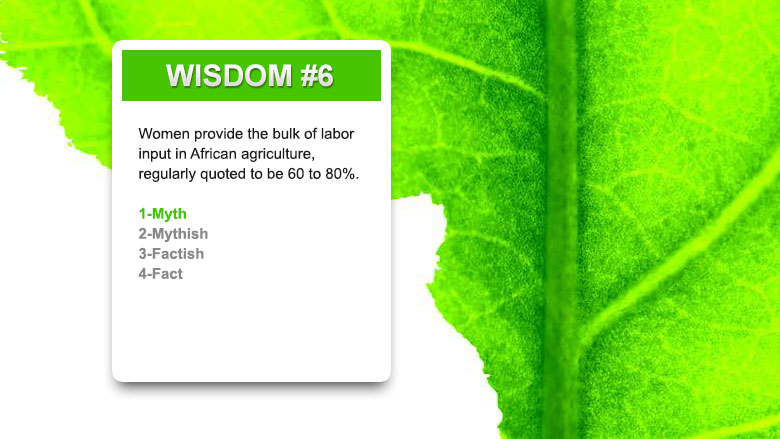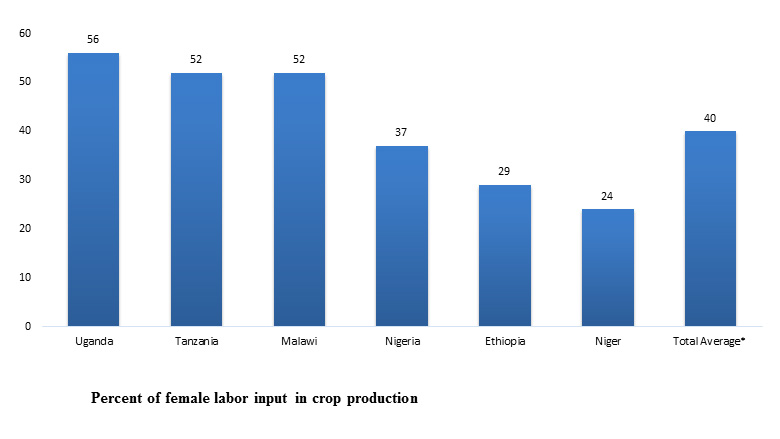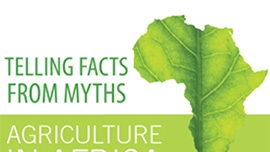SUMMARY
The issue
Women’s large overrepresentation in agricultural tasks, combined with the existence of a gender gap in agricultural productivity and the need to boost Africa’s agricultural output is motivating increased attention to raising female agricultural productivity. Yet can it really be true that women’s labor share in African agriculture amounts to 60-80%, as is regularly mentioned in policy circles? Women make up only about 50% of the population and are already tasked with a host of other domestic duties. If women do 60-80% of the work in agriculture, what would the men be doing, especially given that in rural Africa agriculture is still the primary economic activity for most men?
Second, good data on labor input in agriculture are hard to come by, let alone good labor input data disaggregated by gender. It does not surprise then that the 60-80% labor share figure can in fact only be traced back to an undocumented quote in a 1972 United Nations report holding that: ‘Few persons would argue against the estimate that women are responsible for 60-80 [percent] of the agricultural labor supplied on the continent of Africa.’ (United Nations Economic Commission for Africa, 1972, p. 359). So, what is the labor contribution of women to agriculture in Africa?
The Analysis
The Living Standards Measurement Study - Integrated Surveys on Agriculture (LSMS-ISA) surveys provide a unique opportunity to put the female labor share estimates on more sound empirical footing. They cover six countries (Ethiopia, Malawi, Niger, Nigeria, Tanzania and Uganda) which comprise 40%of the Sub-Saharan African population and span a wide array of farming systems.
They collect for each household member its labor input per plot per agricultural activity. This enables the calculation of the national female labor share in crop production as the total labor input in crop production provided by women across all households (both rural and urban) divided by the total labor input provided by men and women.
Potential sensitivity of the findings to the gender and knowledge profile of the respondent is further analyzed. Male or less knowledgeable respondents may for example over- or underestimate contributions by female household members and vice-versa.
The Results
The results of the study are as follows:
- On average across the six countries, the female share of labor input into crop production is just 40%, substantially less than the widely quoted 60-80%.
- There is substantial variation across countries, with Uganda, Tanzania and Malawi recording shares slightly above 50% and the female labor shares in Ethiopia and Niger well below half (29% and 24% respectively).
- The average share for Nigeria is 37%. It declines, to 32% in northern Nigeria and rises to 51% in the south. The ability of the data to distinguish these differences, which are consistent with expectations, provides confidence in the approach.
- Finally, robustness analysis confirms that the reported labor shares can be sensitive to the gender and knowledge of the respondent. Yet the effects are sometimes positive and sometimes negative depending on the country. Considering extreme cases (all respondents knowledgeable and female or male) only increases the female shares by 5 to 8% at most and does not change the core finding of much lower female contribution to crop production than currently perceived.


